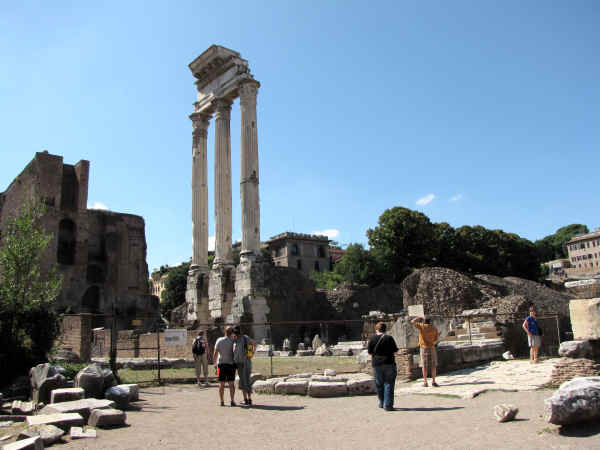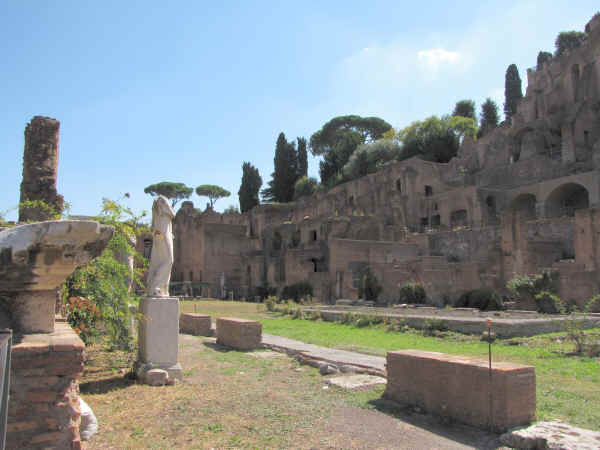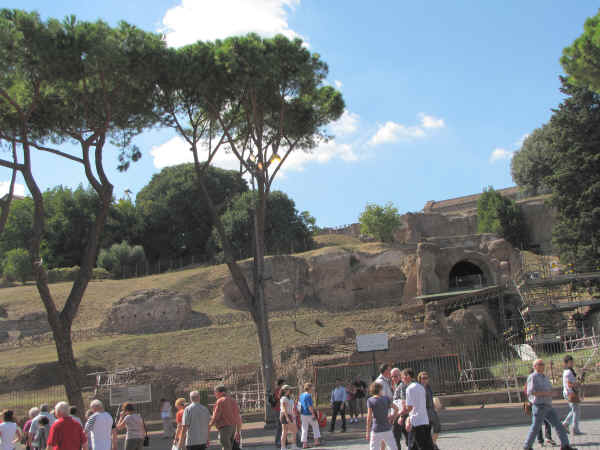
| James Joyce wrote that Rome reminded him of a "man
who lives by exhibiting to travelers his grandmother's corpse."
Joyce obviously had no great love for Rome but he did get this
correct. Frankly though, I find grannie's old corpse to be pretty
interesting.
In the small valley between the Capitoline and Palatine Hills, there is a hodge-podge of ruins left over from a wide range of the city's history. Roman builders seemed to have no reluctance to build a new building right over an older one. The result is this fascinating bone yard of history. |
| The northernmost limit of the Via Sacra - The Sacred Road. Originally, the road started at the top of the Capitoline Hill in the background. The construction of Piazza Campidoglio later covered that portion up though. The Via Sacra was the main street of ancient Rome and marked the route of all victory parades. |
 |
|
|
|
|
 |
|
|
 |
|
|
 |
|
|
 |
|
|
 |
|
|
|
|
|
|
|
|
 |